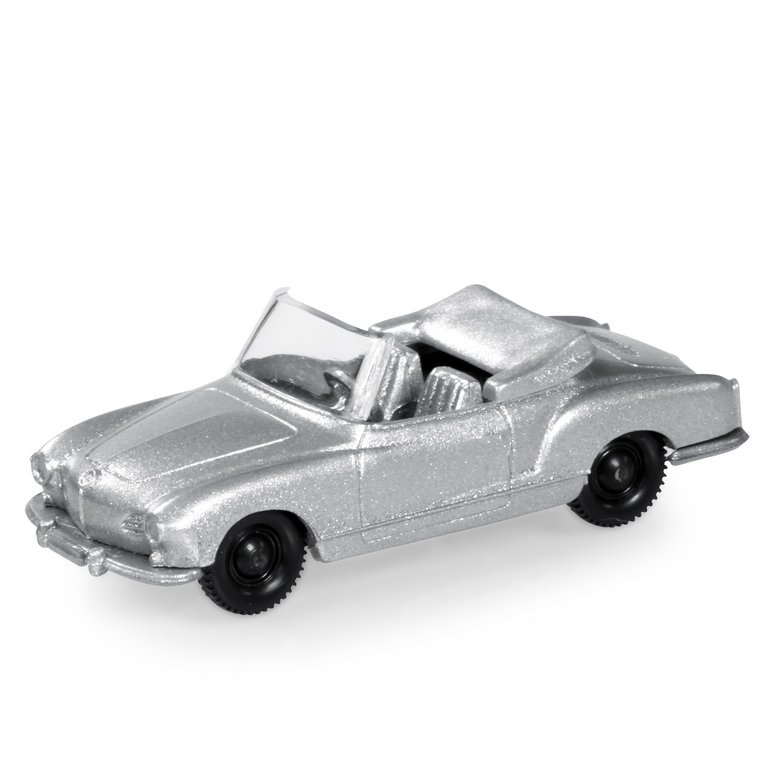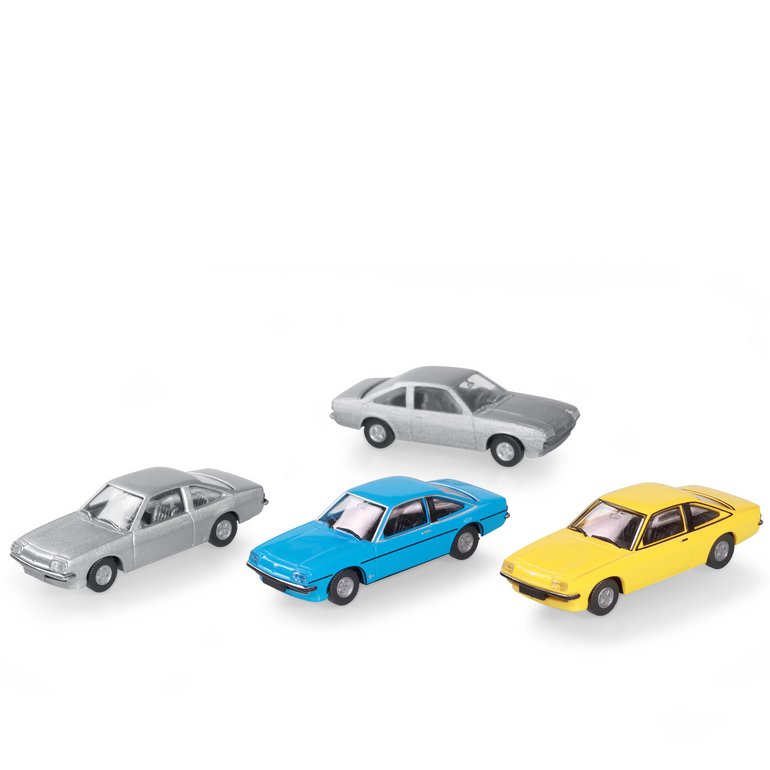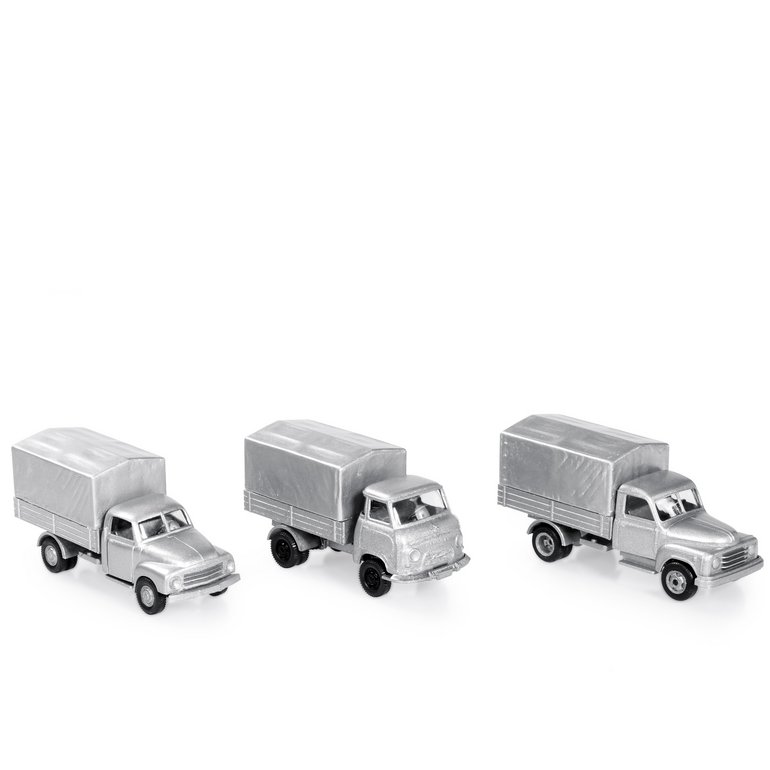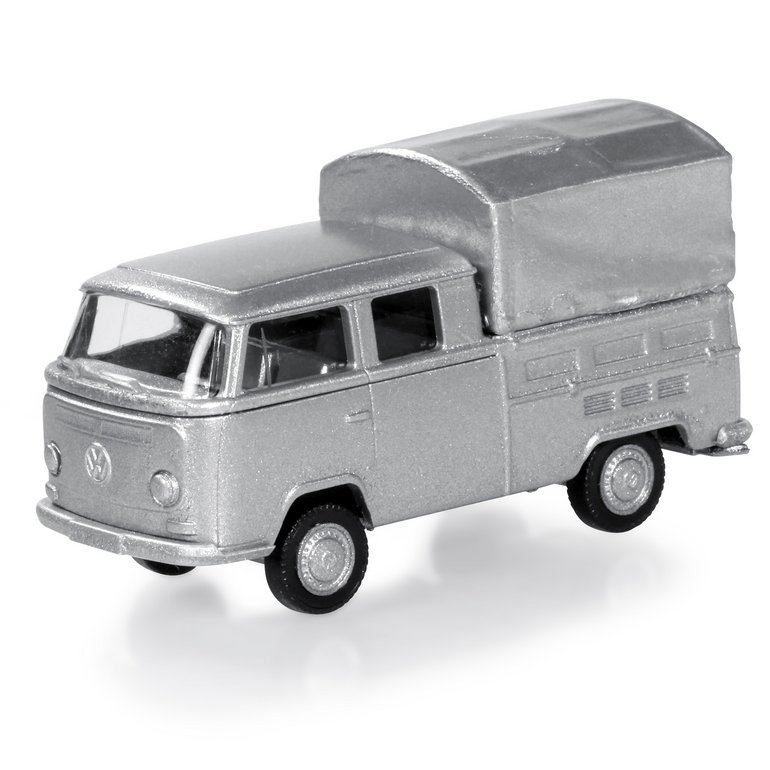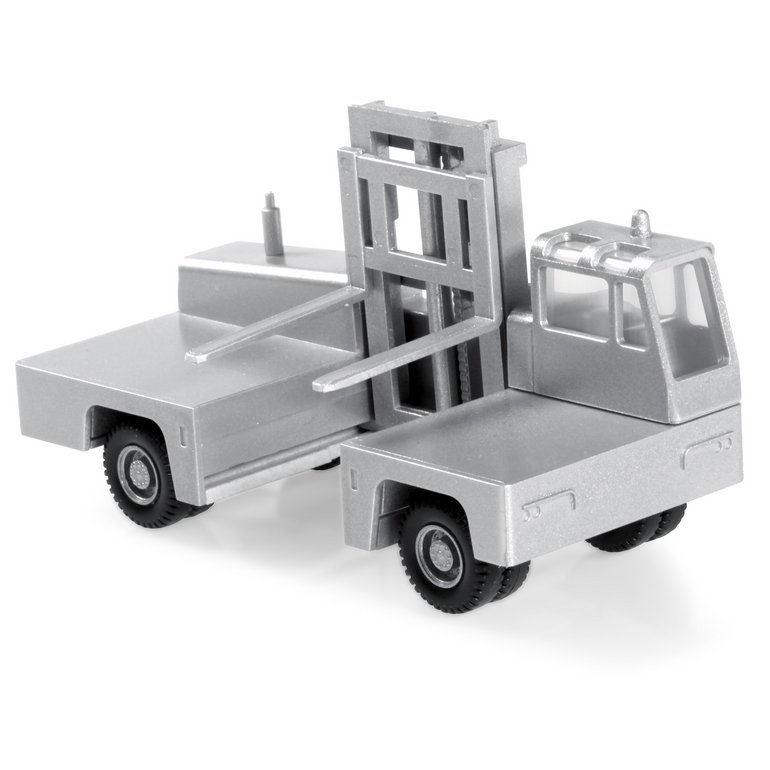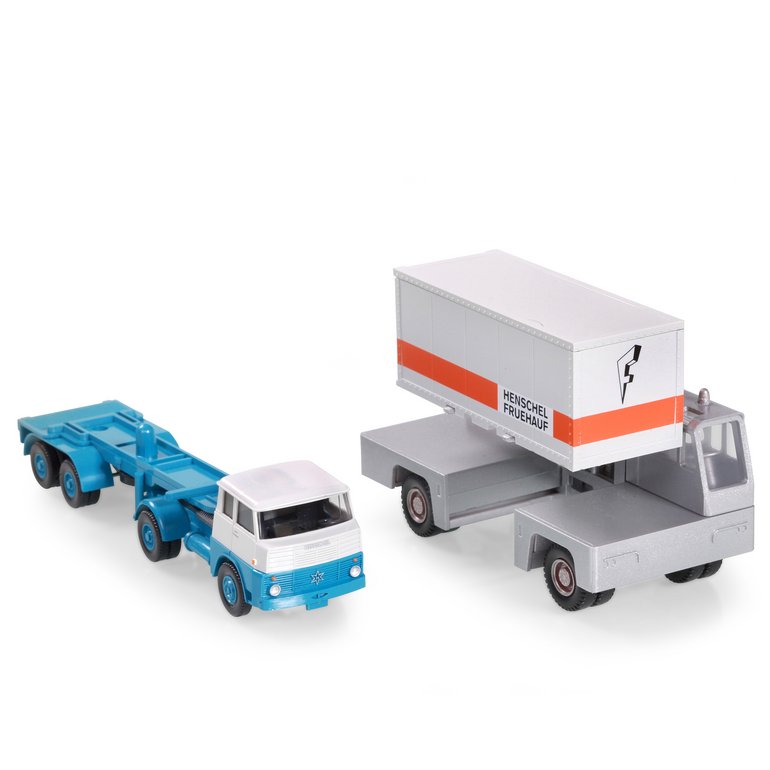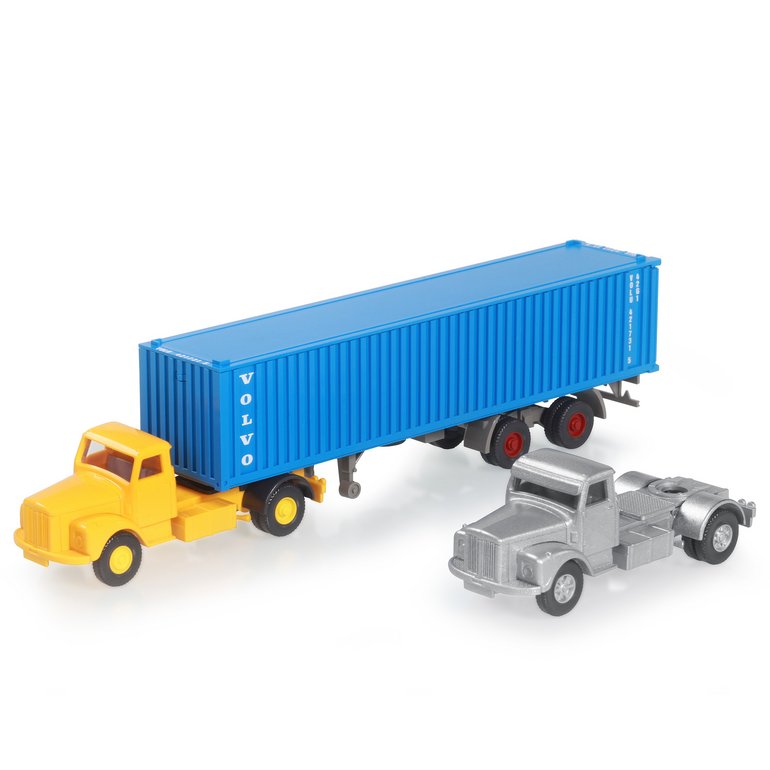• Karmann Ghia released as a classic convertible
• Opel Manta B and Scania L 111 ready for delivery
• Authentic tarps elevate transporters
• New anniversary coffee-table book highlights storied history
Wiking-Modellbau will continue the fun of modelling and the diversity of the miniature world in the programme year 2023 and at the same time celebrate the 75th anniversary of the traffic models. Immediately after the currency reform in 1948, founder Fritz Peltzer presented the first line-up of plastic models on the 1:100 scale – and, since that time, this segment of the model portfolio has been an integral part of the brand's philosophy. Boasting the richest tradition in the 1:87 scale segment, the model manufacturer focuses both on updating their current model selection and on launching the models that boost innovation, which will clearly come to the fore at the Nuremberg Toy Fair. The company will keep announcing additional mould novelties throughout the year and unveil each of them as “Silberlings”. Thanks to a solid brand management that traditionally dispenses with cheap showmanship, distinctive impulses can thus continue to be given in 1:87 scale. WIKING has earned the status of a manufacturer capable of covering the entire spectrum of theme variety. In the course of the year, an anniversary book will be dedicated to the 75-year brand tradition of the traffic models that have been popular for generations. With around 400 photos on more than 160 pages, the book will illuminate the history from yesterday to today and the overall modelling work of the then-revolutionary plastic traffic models.
Karmann Ghia débuts as a convertible
Sometimes the conversion from a coupé to a convertible requires the finesse of a true model artisan. WIKING certainly used these skills to create the classic Karmann Ghia and thereby managed to close a gap in their product range. After shedding its roof, the body was furnished with an inserted windscreen and a tarpaulin - elements which lend the miniature the appeal of an authentic convertible. The interior is rounded off by matching seats and a typical three-spoke steering wheel. Produced between 1955 and 1974, its real-life brother ranked among the most legendary lifestyle vehicles ever made in Germany. Mounted on a VW chassis, the convertible along with the coupé were manufactured at Karmann in Osnabrück.
Ready for delivery: Manta B is entering the race
As previously announced, the model year 2023 will also witness the release of the Manta B. On the occasion of the Nuremberg Toy Fair, WIKING is unveiling the first models crafted from new moulds. The Manta B took the place of the first Manta A series in 1975, which WIKING fans had already taken a shine to as a modern classic many years before. The successor abandoned the lovable round design language of the first generation in favour of a body design that took obvious cues from the Chevrolet Monza, which was created at the same time and conceived by Bill Mitchell, the chief designer of General Motors at the time. Unlike the charming, big wide eyes of the Manta A, the new model comes with rectangular headlamps that embody functionality.
New moulds: Scania L 111 – the bonnet truck that is distinctly Swedish
The fact that the vehicle materialised as the intended Sweden bonnet truck is evident in the première models which WIKING shaped in the recently completed moulds of the Scania L 111 and which are now being released just in time for the trade fair. The Scania L 111 epitomises the bonnet trucks the Swedes used to build into the nineteen eighties. At the time, the company had just dropped the long-standing double name of “Scania-Vabis”. The version of the Swedish tractor unit that WIKING has miniaturised is the last series model - when the hinged windows were already history in the prototype. It will make its début as a stanchion trailer truck and container tractor-trailer in the first half of the year.
Authentic tarp design breathes new life into the world of transporters
What is the next big step in the passionate evolution of the 1:87 scale? This is a question that has been debated intensely by those in charge at WIKING for many years now, as success hinges particularly on the proximity to the collector and their model preferences. And, WIKING will give clear answers to this question at the Nuremberg Toy Fair. The new 2023 product range of the traditional manufacturer includes no less than two tarpaulins and will upgrade the Hanomag Kurier, the Hanomag L 28 and the Opel Blitz as well as the "double cabin" of the VW T2. The tarps designed for the Hanomag Kurier, Hanomag L 28 and Opel Blitz visibly increase the constructional authenticity of the vehicles. Especially the folds on the tarpaulin top and on the sides add to the authentic look of the three small transport vans. In addition, there are visually highlighted buckles – eight on the sides – along with a tarp throw at the front that includes four additional buckles. The tarp designed for the VW T2 double cabin have a similar look, allowing the designers in mould construction to create true-to-the-original tarp folds and the engravers to fashion an appealing look with the three buckles on the side. Especially the Kurier and the L 28 modelled after a Hanomag vehicle, but also the Opel Blitz and the VW T2 with the double cabin are counted among the most favoured transport vans of the Economic Miracle era and have been held in particularly high regard by WIKING fans for many years.
The Lancer Boss Sideloader comes to life to commemorate the 75th anniversary
The traditional model makers have taken the occasion of the 75th anniversary to reveal an original model that up to now has only existed in WIKING’s archive - and they are doing so to please more than just those intimately familiar with WIKING’s history. WIKING founder Fritz Peltzer consistently devoted his creative power to advancements in the field of logistics and picked up on innovations that exceeded ordinary lorry combinations. One such innovation was the prototype of the Lancer Boss Sideloader, which the staff of the traditional model makers put on the desk of their boss as a 1:87 scale model as early as the seventies. The original operated in the area of long-goods logistics and was used for loading containers, pipes and construction timber. The feature that made the original model especially appealing - and even spectacular on the 1:87 scale - to the WIKING head was the lateral orientation of forklift mast and fork. Around five decades have passed before it now comes to mould making and the upcoming anniversary presentation. Chassis and glazed cab have, naturally, been modelled precisely after the original. All of the hydraulic movements the former Sideloader by Lancer Boss was able to perform can be imitated. The model offers options for creating entirely new scenes, providing stimulating ideas for WIKING fans and diorama builders alike who work on this scale. .
The brand presented in a WIKING book and a look at Peltzer’s stockpile of ideas
There can be no doubt: There is no other model brand that can look back on a history that is as multi-faceted as WIKING’s! And, there has never been a better time to cast this look than on the occasion of the 75th anniversary of the 1:100 and, later, the 1:87 scale traffic model programme. Comprised of more than 160 pages, the book relates the story of how the selection of the traffic model range came into being right after the founding of the Federal Republic of Germany - when the Deutsche mark was introduced as new legal tender in the summer of 1948, ringing in the Economic Miracle. The “WIKING cars” owe the beginning of their fascinating journey to success to a well-oiled sales network of specialist dealers that hailed from the era before the war - when the model workshops in Berlin still made sea liners and planes on the 1:1250 and the 1:200 scale, respectively. The initial models were unglazed wire axle models before the company started making filigree roll axle models. By the end of the nineteen fifties, the company had begun to make the glazed models that we still know today – a design that was remarkably true to the original at the time. The father of the success in those years was most certainly master model maker Alfred Kedzierski, who gave the models their shape for decades at the behest of WIKING founder Fritz Peltzer. The new book is founded on the latest research and a plentiful pool of exclusive photos that tell the story of how a model came into existence at the time and illustrate how the company continues to give fresh impetus to the culture of collectors. However, WIKING fans will probably be most excited about the central theme of the model selection, which had been widely kept under wraps - until today. Countless original documents that had been kept under lock and key for years are now being released and put into an overall historical context. The reader can search for clues that may tell them what makes WIKING founder Fritz Peltzer tick.


